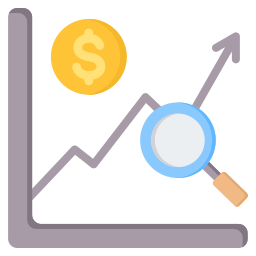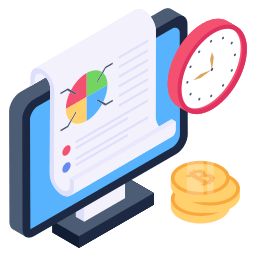Call: +91 9818108053 | [email protected]
What is Algorithmic Trading?

How Algorithmic Trading Works?
Algorithmic trading works by turning a trading strategy into a computer program. Here’s how it happens:

Strategy Definition
The first step is creating a trading strategy, which is a set of rules that tell you when to buy or sell something. This strategy can be based on different things like technical signs, market trends, or statistical models.

Algorithm Programming
After the strategy is made, it's turned into a computer program or algorithm. This means writing the specific rules and conditions that will guide the trading decisions of the algorithm.

Backtesting
Before using the algorithm in real markets, it's tested using old market data. This helps see how the algorithm would have worked in the past and allows for changes to make it better.

Real-Time Trading
Once the rules have been tested and improved, they are applied to actual buying and selling. This system constantly checks market conditions, makes decisions based on its programmed rules, and carries out trades automatically.

Tracking and Improvement
The algorithm's performance is constantly watched to ensure it works as intended. Changes and improvements are made to adjust to changing market conditions or to enhance overall performance.
Benefits of Automated Trading
Automated trading has many common advantages:
1. Speed: Automated systems can place trades in just milliseconds, allowing quick reactions to market changes and opportunities.
2. Accuracy: Following set rules, automated systems make trades with great precision, lowering the chance of errors compared to manual trading.
3. Best Execution: Trades are often executed at the best possible prices.
4. Low Latency: Trade order placement is instant and accurate (there is a high chance of execution at the desired levels). Trades are timed correctly and instantly to avoid significant price changes.
Reduced transaction costs.
Simultaneous automated checks on multiple market conditions.
5. No Human Error: Reduced risk of manual errors or mistakes when placing trades. Also negates human traders; tendency to be swayed by emotional and psychological factors.
6. Backtesting: Algo-trading can be backtested using available historical and real-time data to see if it is a viable trading strategy.
Challenges of Algorithmic Trading
Despite its benefits, algorithmic trading has several challenges:
1. Technical Issues: Relying on technology means that any technical system flaws or failures can affect trading performance.
2. Overfitting Risk: Algorithms can be overly tailored to historical data, leading to possible underperformance in real trading situations.
3. Market Impact: Large orders executed by algorithms can influence market prices, especially in less liquid markets.
4. Regulatory Scrutiny: Authorities increasingly monitor algorithmic trading to ensure market stability and fairness.
5. Complexity: Developing and maintaining trading algorithms requires specialized knowledge and skills, making it a complex process.
Getting Started with Algorithmic Trading
If you want to get into algorithmic trading, follow these steps:

Define Your Strategy
Create a clear trading strategy based on your goals, risk tolerance, and market conditions.

Develop and Test Algorithms
Build and test your algorithms using past data to make them work better and test them on different Algo softwares

Choose a Platform
Pick a trading platform or broker that supports algorithmic trading and provides the tools and infrastructure you need.

Monitor and Optimize
Keep an eye on how your algorithms are performing and make changes to improve results.

Stay Informed
Stay updated on market trends, technology advancements, and regulatory changes that could impact algorithmic trading.
To start your algorithmic trading journey contact us:
